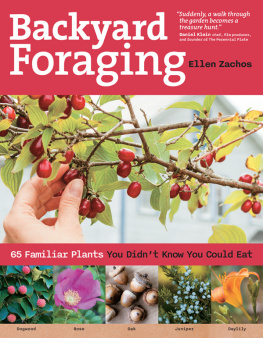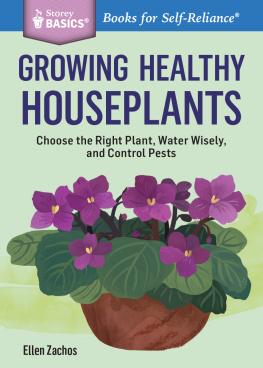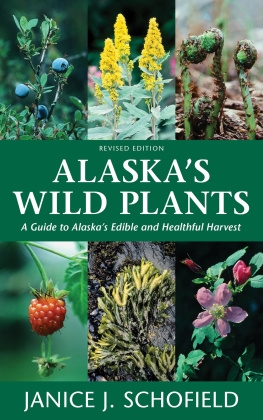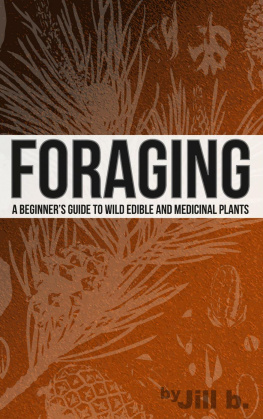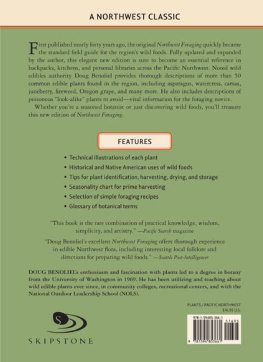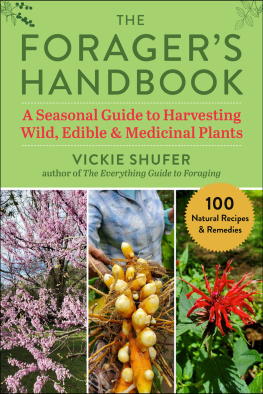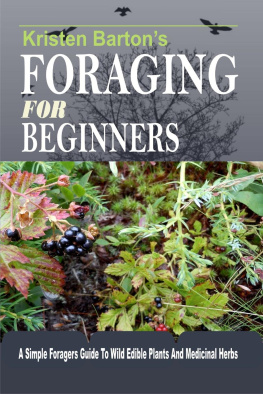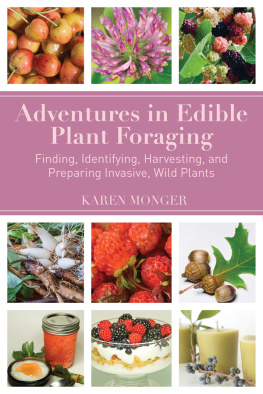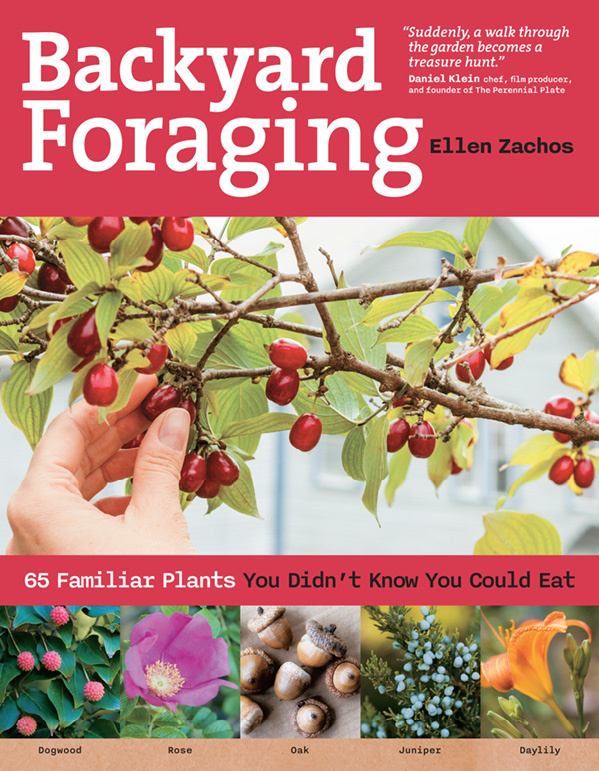No one learns to forage on their own. This book is dedicated to the friends who have taught me and the friends I have taught. Mark, Leda, Cayce, and Michael heres to many more years of foraging, cooking, and eating together.
What a pleasure to work with a photographer and an editor who enjoy wild edibles! Thanks to Rob Cardillo for making art out of the ordinary, and for being willing to try everything I asked him to eat. Thanks to Carleen Madigan for her sharp editorial eye, her plant suggestions, and for the nuts and berries she foraged and sent my way. Many thanks also to my crew of dedicated readers: Michael, John, and Elizabeth. I feel safe in your hands.
Jacob was not about to accept my offer of ripe Juneberries without a little more information. We were hiking in the White Mountains of New Hampshire, miles away from the nearest grocery store, and as far as my nephew was concerned, the woods were not for eating. I showed him the five-pointed crown on the top of the berry, and explained that any berry with that feature was safe to eat. I showed him the tree it came from (an Amelanchier species) and its characteristic smooth gray bark and oval leaves. I cut open a berry with my fingernail to show him the small seeds dispersed throughout. Finally, I ate a few of the berries myself.
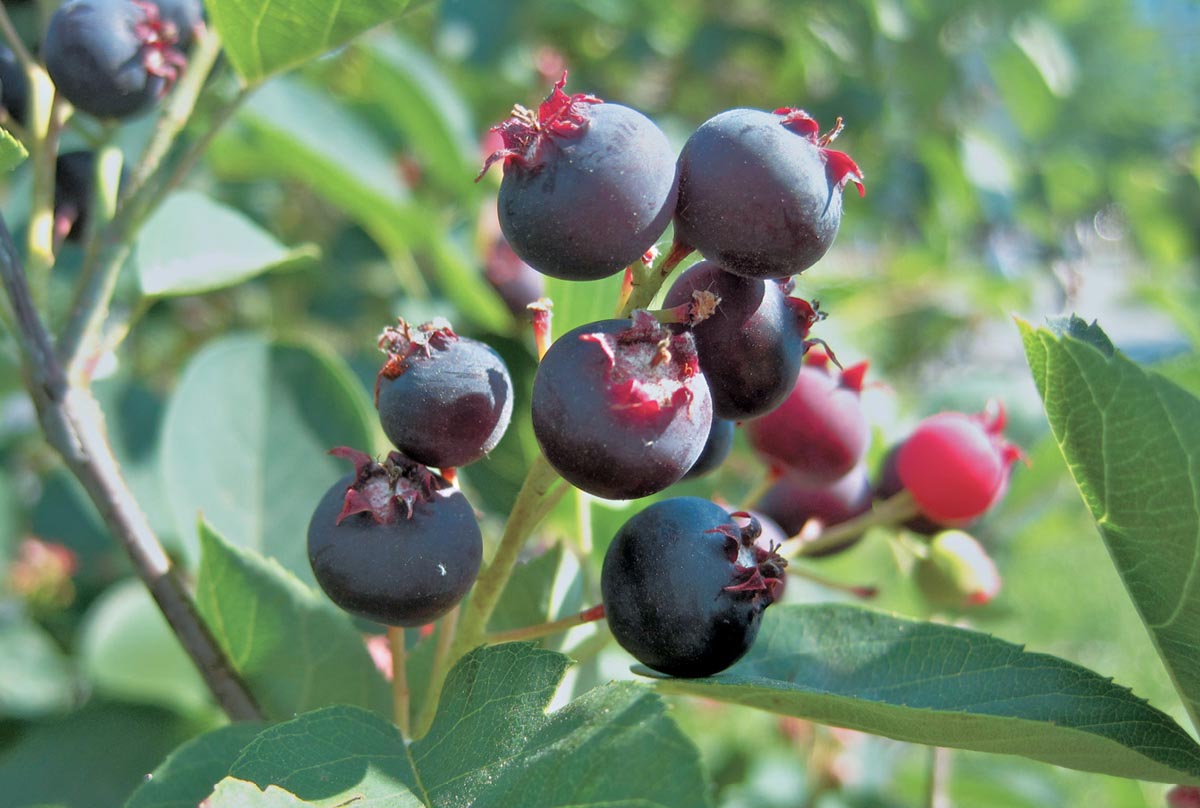
Ripe Juneberries are a juicy treat found in yards, parks, and woodlands.
When I didnt immediately keel over or grab my stomach in anguish, Jacob decided to trust me, but he was right to ask questions. The first rule of foraging is never, ever, eat anything youre not 100 percent sure of. This applies whether youre picking in the wild or in your own backyard.
Foraging in your own backyard! you say. I thought you had to wander the fields and woods to forage. Nope. Truth is, many of our favorite garden plants have edible parts that have simply been overlooked. And since many of us already know what were growing in our own backyards, identification there is a lot easier than it would be in the wild. Its a great way to start foraging and to introduce new edible plants to your menu.
This book presents familiar ornamental plants and weeds with a secret: they just happen to be delicious. Each plant has its own profile, with information on how it grows, how to harvest it while preserving its ornamental value (or how to control its weediness), and how to best use it in the kitchen. Youll see plants in the landscape, in close-up, and as food.
But wait, theres more! By going one step further and actually planting your garden with edible ornamentals, you can make the most out of your space, even if its very small. Historically, gardeners have considered ornamental plants (trees, shrubs, vines, perennials, and annuals) as separate from edible plants (fruits, vegetables, and herbs) and have planted them in different locations. Do you have the time and energy to plant separate kitchen and ornamental gardens, replete with stylish tuteurs and weeded paths? Do you have enough space to plant two different kinds of gardens? I dont.
I look at ornamental plants with edible parts as the superheroes of the modern garden. They feed body and soul (with their deliciousness and beauty, respectively) and cut back on gardening chores by letting you focus your precious time on a single space.
But, you argue, a quick trip to the supermarket is so fast and easy, why take time to walk around the backyard, looking for food? Because its there. Because its free. And because its fun. The thrill of discovery (you can eat that?) is intoxicating!
Lets walk around the neighborhood. Ill show you the best leaves for salad and the tastiest berries to snack on. Deliciousness is key. This is not a field guide or a survival manual. Sure, its fun to imagine which wild plants you might live on if you got lost in the woods, but if this stuff werent tasty, I wouldnt be interested. Im not sure why todays gardener has forgotten that daylily buds and milkweed pods are astonishingly delicious, but its time to get reacquainted with these excellent vegetables.
What if you dont have your own garden? Dont despair! Perhaps you have friendly neighbors whod be happy to have a jar of Oregon grape jelly in exchange for letting you forage in their backyard. Whenever youre foraging on private property, be sure you ask permission first, even if youre only removing the occasional dandelion. Its also possible to forage in public places when you know the rules. For example, the National Park Service allows individuals to pick up to 25 pounds of pine nuts per year, as long as theyre for noncommercial use and no trees are damaged in the picking. While most parks dont allow wholesale harvesting of leaves and stems, theyre more relaxed about nuts and berries. Collecting mushrooms and weeds may also be permitted; just be sure to ask first.
Which brings me back to the ease and elegance of backyard foraging. Youve already got permission, and you probably know what youre growing. So lets get started!

My fall harvest bowl includes wintergreen, black walnuts, canna rhizomes, silverberries, and hopniss tubers.
Chapter 1
Getting Started: Identifying Habitats in the Hood
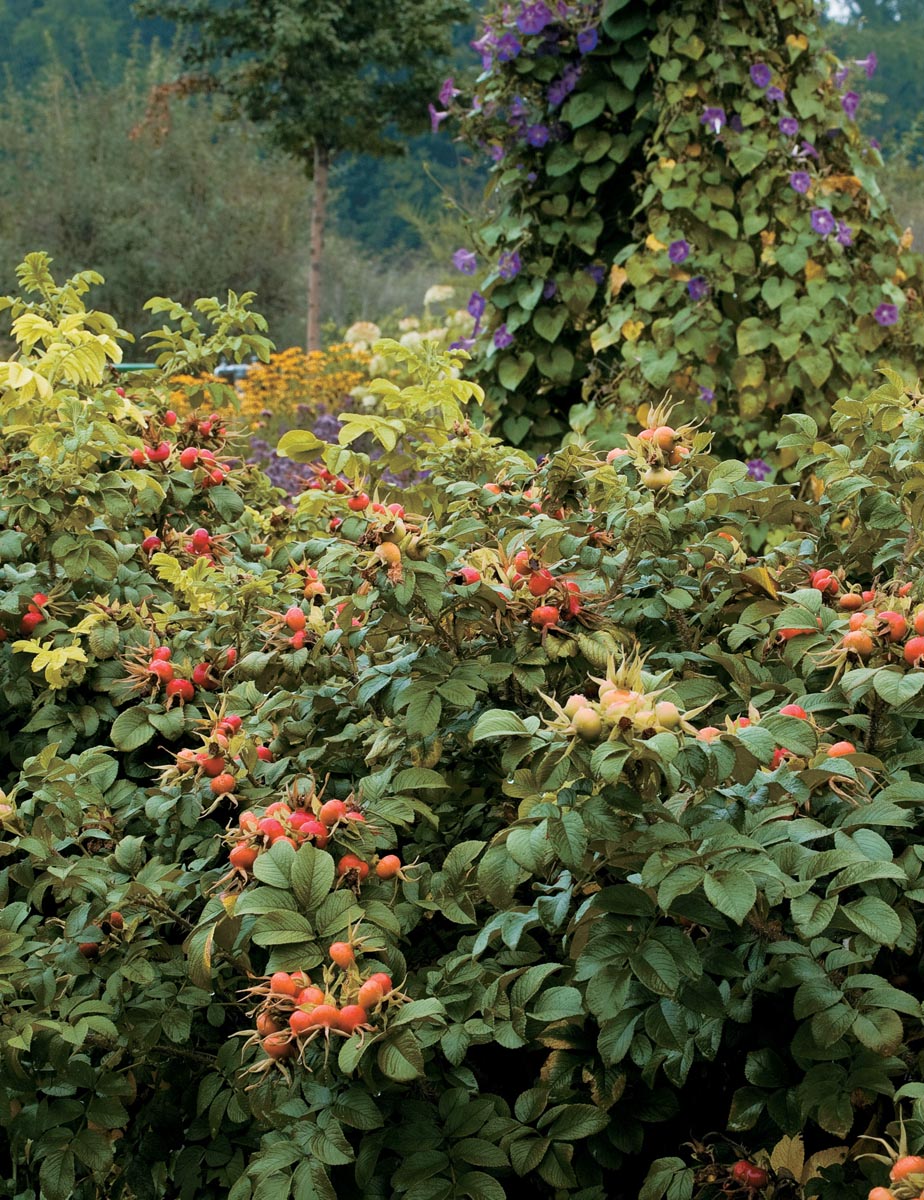
A crop of large, luscious rose hips is just beginning to ripen.
Wild foods, nontraditional edibles, foraged foods whatever you call them, these comestibles have much to recommend them. Sure, backyard foraging reduces your carbon footprint, but the key reason for eating these plants is that they taste great. Their surprising flavors, unusual textures, fresh colors, and nutritional value can liven up your cooking, or offer convenient snacking right from your own backyard.
Different landscapes produce different plants. Take a look around and assess your surroundings. Where are you? What do you see?
Are you standing on a mowed lawn?
Get down on your hands and knees to look for sheep sorrel, chickweed, dandelion, and pineapple weed.
Is there a meadow behind your house?
Poke around in the high grasses to look for milkweed, wild garlic, and oxeye daisies, and check the meadows edges for silverberry, sweetfern, chestnut, and black walnut.
Are you sitting pretty on a few wooded acres?
Look for spicebush, Juneberry, garlic mustard, wild ginger, ostrich fern, miners lettuce, wintergreen, mayapple, sassafras, or California bay.
Are you near a stream, river, or lake?
Look for hopniss, chokeberry, or Japanese knotweed.
Are you looking at a vacant lot thats weedy and overgrown?

